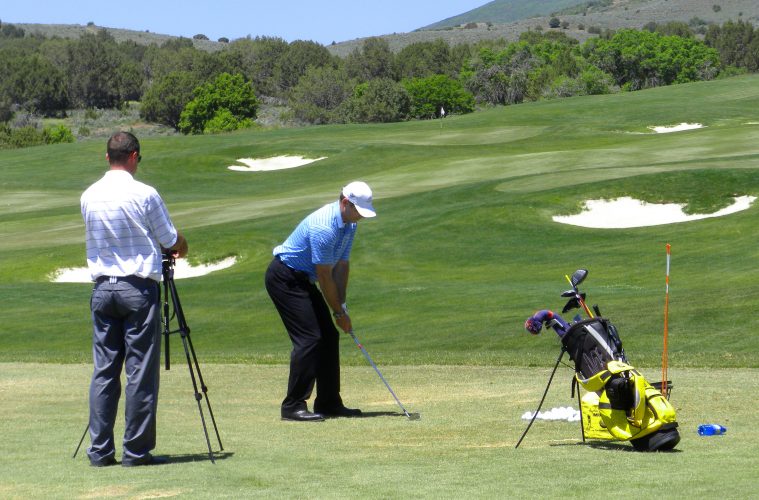The difficulty in playing golf is self evident, However, learning the game is no simple matter. Quality teaching is not an automatic situation because of varying methods used and the range of successes generated. For many students the possibility of information overload can lead to paralysis by analysis.
Finding the right teacher is also no easy matter. There’s also the issue in just how prepared students are to learn and how capable teachers are in building a communication link that ultimately leads to trust.
The level of patience needed can also be a taxing issue for students to handle. Meaningful results may not occur in a very short time and the dedication that’s needed can stress any relationship between student and teacher.
Getting the perspective from golf professionals with proven records of success provides a roadmap on what students can do in order to choose the best path for the results they’re seeking to attain. Here are four teachers weighing in on the process they follow and what a successful relationship between teacher and student can achieve.
***
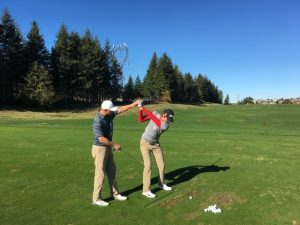 How well is golf taught generally in America?
How well is golf taught generally in America?
PAUPORE: Golf instruction in America is very strong. There is a tremendous amount of quality instructors in all areas of the country and the demand for golf instruction has never been greater. With the advances in technology of analysis software, launch monitors and golf equipment, more and more golfers are seeking out good golf instruction to maximize the potential in their games.
STEVENS: I would give it B. Teaching has improved on giving golfers good advice on how to practice – how to go about practicing the swing and improving your game.
LIEBLER: Right now, golf instruction is in a good spot. Teachers and coaches have shifted the focus on making it quicker and easier. We used to give the traditional “hour lesson,” but now it’s a half hour at most. We are simplifying it for people, allowing them to have fun and give them a reason to be out on the range or golf course. That is how teaching has evolved.
BOCRA: It’s good, but I don’t think it’s awesome. To be honest, it’s a bit all over the map. Teachers are not teaching enough personalized lessons. When you consider that everyone is built and moves differently, teaching everyone the same method or the same technique doesn’t make practical sense – yet, I see it being done all the time. Instructors need to teach the specific student and not simply a generalized concept. One size does NOT fit all. I teach based on biomechanics and bio-movement, which carefully takes into consideration everyone’s unique body movements.
What steps should someone take when looking for an instructor?
BOCRA: Get referrals from other golfers. Check for a good accreditation. Make sure they make sense to you. If meet them and don’t feel comfortable pretty quickly – with women, especially, if you are not comfortable in 5-10 minutes – that probably is not the right person for you in that environment.
LIEBLER: Look for somebody who makes you feel comfortable. Someone who instills confidence, who understands you. Find a teacher who will take you out on the course and show you how to play the game better. It’s really all about getting the ball in the hole, not just throwing someone on the range.
PAUPORE: A good instructor is someone who you can relate to and someone who communicates in a way that you can understand. Your instructor needs to show videos of your swing only if you are a visual learner or has numerous drills at his or her disposal if you are a feel player who learns kinesthetically. Everyone learns in different ways so make sure your instructor knows what your learning style is and can provide you information accordingly.
STEVENS: Find someone in your area, because if you have to drive two hours to a lesson, you are not going to go too often. Look for ongoing certifications and education, which shows they are taking their job seriously. Ask golfers who have shown improvement who teaches them.
When beginning a relationship with an instructor what key elements make for a good checklist for a student to follow?
STEVENS: Each student should have goals and clearly identify what they want from their instruction. I ask each student, “Why are you here? Do you want to be a scratch golfer — hit it farther — beat your friends?” The student and instructor have do understand the goals. The No. 1 answer I hear is that they want to be able to play golf with anybody and not be embarrassed.
LIEBLER: Fundamentals. Fundamentals. Fundamentals. If you are working on a whole new golf swing the first day, you have the wrong person. Anytime I give a lesson to someone for the first time, I ask them, “Do you have any physical limitations?” If an instructor doesn’t ask you that question within the first three sentences, then you don’t have a great teacher.
PAUPORE: The No. 1 element is for an instructor to be able to adapt. Every golfer and every swing is different. Everyone learns differently. Good instructors adapt their learning style to work within the ability of the student. No. 2 is being a good listener and No. 3 is being able to tailor instruction to the goals of the student – if they want to hit it farther, don’t spend time putting.
BOCRA: The teacher should be asking you a lot of questions—about past or current injuries, your golf history, your interest in the game—showing that they want to know all about you. The teacher’s job is to put you at ease. Moreover, if the instructor cannot adequately explain to you cause and effect, or tell you why you should be making a certain movement or change, my advice would be to find someone who can.
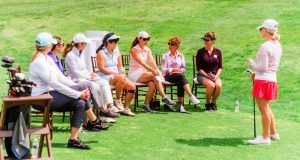 Your biggest pet peeve concerning over reliance on golf jargon when teaching is what?
Your biggest pet peeve concerning over reliance on golf jargon when teaching is what?
BOCRA: A good instructor uses the right words, but should be able to do so without saying a lot of words. Knowing what to say is just as important as knowing how to say it. Poor communicators make for poor instructors. Our job as teachers is to impart knowledge; you can’t do that if the student doesn’t understand what you’re saying. Students also must understand why we’re saying it. Random advice without explanation and context is absolutely useless.
STEVENS: Telling someone who is slicing, or hitting big pushes, that they are “not getting through the ball.” That is so vague, and golfers always interpret that to mean they need to rotate their body harder to make a full follow-through – which only makes them slice it more.
LIEBLER: “Keep your head down” is the perfect example. How many times when someone has topped the golf ball, do you hear someone say that? And that is not the answer to the problem. You have to look at what is making a person raise up. Your head is only following what your body is doing as you make a swing.
PAUPORE: Biomechanics is a big thing now, teaching how each body moves during the golf swing. I hear biomechanical terms that sound great when the teacher says them, but if the student has no idea what you said, it does not do any good. We can “over-term things.” Keep it simple.
In what ways do you build a base for students to understand their own game instead of constantly running back whenever the most minor of setbacks occurs? Jack Nicklaus often reminds people his instructor Jack Grout was keen on doing so for him.
STEVENS: I try to get them to understand the cause and effect of what they do. If the ball does this, or your divot looks like that, or the contact felt like this … it is because of you did this. I give them drills they can use to work on fixing whatever it is.
PAUPORE: When I am teaching someone a certain concept, I want to make sure the student understands why we are making this change as well as how to make the change. If students can truly understand the cause and effect of the swing – and ultimately the ball flight – they can easily make changes throughout a practice session or round of golf to continue improve when setbacks occur.
BOCRA: I perform a body assessment on all of my students. I teach them how their body moves, how it can move better, and why their specific golf swing works the way it does. I give my students solid fundamentals to build into their pre-shot routine. We train together so their pre-shot routine becomes second nature. We establish solid fundamentals students can always return to.
LIEBLER: Know the grip and setup. That is the foundation. Many times, there is nothing wrong with the swing. It can be that simple: grip and setup. And practice making good swings. Envision each shot. Repeat and repeat good swings to create that muscle memory. It’s like a basketball player taking 1,000 jump shots in practice; in game situations he is not thinking about technique, but has retained that muscle memory.
If you had to recommend an area of emphasis for the PGA of America in the area of instruction — what would you suggest be done for an organizational perspective?
LIEBLER: From an organizational standpoint, the future of golf is making it more of a family sport, making it attractive in a shorter amount of time. At Broad Bay Country Club, we are seeing that when you get juniors coming out to the golf course, you see their parents popping up at the range, or on the course. It’s about families, having fun, about golf being a social experience involving everyone.
PAUPORE: The PGA is doing a better job with education, but we can always use more programs for instructors. In our PGA Utah Section, I regularly meet with four or five instructors to get together and talk about what everyone is doing, to learn new things and ideas from one another. PGA support for more opportunities like that would have a very positive impact.
STEVENS: Programs for PGA Class A certification needs to focus more on teaching the game and the elements of modern teaching methodologies. Certifying better trained instructors suited to teach the whole family is essential to the growth of the game.
BOCRA: To become a certified teacher, I believe mentorships with top golf instructors should be required. I think you need to spend years with other great instructors before you can even become a good teacher yourself. I learned so much by watching great teachers, how they work with different types of golfers, how to teach under different scenarios, and how to communicate. There is nothing better than watching a really great teacher teach.
***
THE PARTICIPANTS —
BRIAN LIEBLER
Head Golf Professional
Arcis Golf/Broad Bay Country Club
Virginia Beach, Va.
BACKGROUNDER:
Born into one of Virginia’s “first families of golf,” Brian Liebler grew up in Virginia Beach, Va., where his father Butch Liebler – a highly regarded teaching professional and past president of the Mid-Atlantic PGA Section – was head professional at Cavalier Golf and Yacht Club. His uncle Steve Liebler played on the PGA Tour and coached at the University of South Carolina; Brian’s brother, Matt, also is a head professional at a club in Virginia Beach. Competing by age seven, Liebler went on to play four years at Anderson (S.C.) University, where he majored in journalism. He became a club professional in 1996, was hired for his first head professional position in 2009 and returned home to join Broad Bay CC in 2016. Head Golf Professional Arcis Golf/Broad Bay Country Club Virginia Beach, Va.
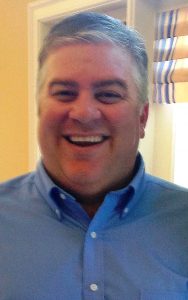
THE LIEBLER STORY —
Growing up at a golf club where my father was the head professional, I was running carts at age 8, cleaning ash trays in the golf shop and regripping clubs for 50 cents each, which I thought was all the money in the world. It was a wonderful place to grow up.
At an early age, I had a good eye for being a teacher. Dad said I had a better eye than he did. I guess it’s just in my blood. Watching my dad teach made a significant impact on my decision to become a club professional.
Although I was never the greatest student in school, golf was always the way I could focus. My approach was always looking for the simplest possible way to do something. That is how I teach golf. I am very fundamental and try not to give people too much information. I am very much a “keep it simple” person. I teach a one-plane move; very simple.
BRYAN STEVENS
Director of Instruction
Arcis Golf/The Club at Snoqualmie Ridge
Snoqualmie, Wash.
BACKRGOUNDER —
Born and raised in Yuma, Ariz., Stevens moved to Belleview, Wash., as a teenager, developing into a standout 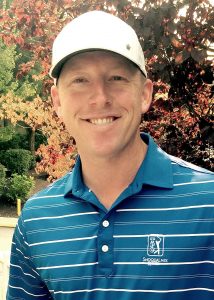 junior player and member of the golf team at the University of Washington, where he later earned a degree in Economics. After a brief time on Southwest mini-tours, in 1998 Stevens started teaching and coaching in the Seattle area, which led him to pursuing a career in golf instruction. The Director of Instruction at Snoqualmie since 2015, Stevens was a two-time Northwest Athletic Conference Coach of the Year while at Bellevue College from (2011-2016).
junior player and member of the golf team at the University of Washington, where he later earned a degree in Economics. After a brief time on Southwest mini-tours, in 1998 Stevens started teaching and coaching in the Seattle area, which led him to pursuing a career in golf instruction. The Director of Instruction at Snoqualmie since 2015, Stevens was a two-time Northwest Athletic Conference Coach of the Year while at Bellevue College from (2011-2016).
THE STEVENS STORY —
While I was at the University of Washington, I got a job in Seattle at a new indoor golf facility called Golf Zone. It was the first indoor facility I had ever seen, with all the high-speed video technology.
People would come in and I would show them the facility and the equipment, then show them their swing compared to a tour pro’s swing and hope to sign them up with one of the teachers for lessons. I was really enamored with the application of technology to instruction, which still applies to me today, as I continue to pursue the new levels of modern teaching methodologies.
GIA BOCRA LIWSKI
Teaching Professional
Hamilton Farm Golf Club
Gladstone, N.J.
BACKGROUNDER —
Gia Bocra Liwski is a Class A LPGA Professional with 25 years of teaching experience who joined the Hamilton Farm Professional Staff in 2010. A wife and mother of three, Liwski is the Founder & Host of Golf Experiences for Her, has been named one of Golf Digest’s “Best Young Teachers in America” and selected for the Golf Digest “Best Teachers by State” list. A former captain of the Rutgers University golf team, Liwski approaches instruction  based on bio-mechanics, allowing students to swing a golf club the way their individual body does it best.
based on bio-mechanics, allowing students to swing a golf club the way their individual body does it best.
THE BOCRA STORY —
I didn’t grow up in or around country clubs and really only started playing golf as a teenager. I fell in love with the game and by my senior year in high school had set up an internship at Forsgate Country Club in Monroe Township, N.J., which is also where I then went on to work during the summers while in college.
As a beginner in the golf industry I did it all – filled divots, was a course ranger, pulled carts at 5 a.m., learned how to merchandise and even began working with the junior golfers. What was instrumental for me, however, was seeing and learning from Krista Dunton, who was a club professional on staff at that time. The presence of an expert instructor, who happened to be a woman, was transformative for me at that early stage in my career.
Seeing first-hand that a female instructor could be successful, especially back then, in an often male-dominated industry, gave me a strong sense of confidence and comfort in pursuing my ambitions in golf.
In 2016, I founded Golf Experiences for Her, an events company focused on hosting highly customizable, golf-and lifestyle-centered events providing women opportunities to advance their golf games, while incorporating sophisticated off-the-course lifestyle experiences. My company blends the things I love: teaching and helping women, as well as sharing my passions like cooking, fashion and fine living.
JON PAUPORE
Director of Instruction
Jim McLean Golf School/Red Ledges
Heber Valley, Utah
BACKGROUNDER —
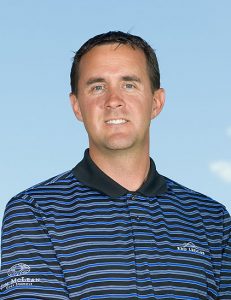 Jon Paupore began his golfing career at Eastern Michigan University, where he competed from 1993-1996, and played on several tours professionally, followed by eight years teaching at The Bear’s Club in Jupiter, Fla. With his extensive knowledge of the golf swing and the Jim McLean system, Jon has experience working with players from the LPGA, PGA, European Tour and Ladies European tours. Paupore has been named 2014 PGA Utah Section Teacher of the Year and “Top Teacher in Utah” by Golf Digest.
Jon Paupore began his golfing career at Eastern Michigan University, where he competed from 1993-1996, and played on several tours professionally, followed by eight years teaching at The Bear’s Club in Jupiter, Fla. With his extensive knowledge of the golf swing and the Jim McLean system, Jon has experience working with players from the LPGA, PGA, European Tour and Ladies European tours. Paupore has been named 2014 PGA Utah Section Teacher of the Year and “Top Teacher in Utah” by Golf Digest.
THE PAUPORE STORY —
My teaching career started with Jack Nicklaus at his private golf club, The Bear’s Club. Jack was still playing on the Champions Tour and working with Jim Flick. I truly enjoyed watching Mr. Flick work with Jack as he was always willing to answer my questions and allow me to provide insight into what I saw Jack doing with his swing. It was very valuable to be able to pick the brains and learn from one of the best teachers and perhaps the best player ever to play the game.
In preparation of opening the golf school here at Red Ledges, I was fortunate enough to work with Jim McLean in Miami to become certified as his Director of Instruction. My time with Jim and the numerous meetings, clinics and schools that we have worked together over the last 10 years has truly transformed me as an instructor. Over my teaching career, I have had the pleasure to work with some of the best players in the game, including PGA Tour Players Briny Baird, BJ Staten, and Jimmy Stanger, as well as LPGA star and perhaps the best woman amateur to ever play the game, Kelli Kuehne.
WHAT'S YOUR REACTION?


